Contents
Superphosphate is a mineral fertilizer that is obtained after the decomposition of natural phosphates. The main component is phosphorus oxide, it is he who helps the fertilizer to get to the roots of plants faster. In the country, the use of superphosphate has a beneficial effect on growth, ripening rate, taste, and root development. In addition, it slows down the natural aging of crops, which helps them bear fruit longer. Most noticeably, this affects the growth of grapes and cucumbers.
Types
Phosphorus fertilizer is obtained from naturally occurring minerals or slags that remain after steel production. Pure phosphorus is practically not found, but appears everywhere as an oxide. Based on the characteristics and properties, it is divided into several subtypes so that gardeners do not get lost and do not harm plantings, especially grapes and cucumbers during the flowering period.
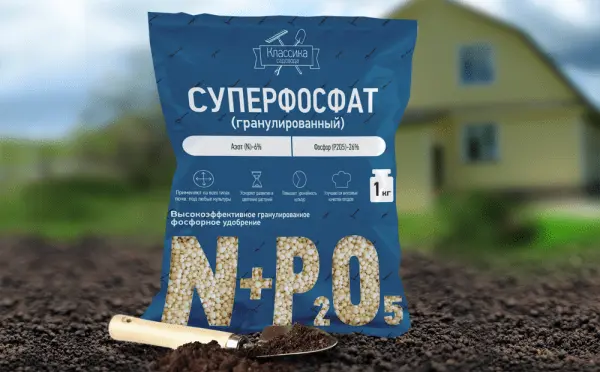
Monophosphate (simple) – requires a certain humidity of the environment, has a limited effectiveness. Budget option, especially if you have a large plot. Monophosphate is produced as a powder or granules. Excellent for podzolic, sandy and loamy soils. Works best with legumes, cereals and cruciferous plants. However, it has a beneficial effect on potatoes, beets, turnips, carrots, onions.
Recommended for use on grape plantations. Monophosphate is poorly soluble in water, so it is impossible to water it. Another way to use: mix it with compost, keeping the proportion – 1:1000. Monophosphates are best applied during autumn autumn plowing or in early spring, as a pre-sowing preparation.
Double superphosphate – available in granules, soluble in water. Fertilizer is laid in the ground in late autumn or early spring, and after 1-2 times the crops are irrigated. This fertilizer is best used during spring planting by watering a seedling placed in a hole. Since it is not washed out of the ground, the seedlings will receive the necessary support from the very beginning of growth.
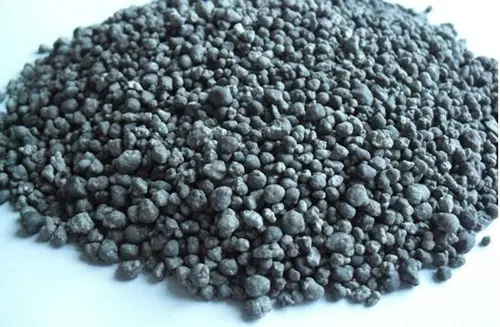
Granular superphosphate – available in granules, as the name suggests. Great food for cruciferous plants. Ammonized – has the best solubility. It is used for feeding oilseeds, cruciferous plants.
Monophosphate is used together with nitrogen fertilizers, while double and granular are best combined with fertilizers mixed with potassium. As you can imagine, this fertilizer is best suited for plants that are in dire need of phosphorus and sulfur. Regularly using superphosphate in the garden, over time you will learn how to correctly calculate the amount and frequency of its application.
Video “Application of phosphate fertilizers”
Informative video with expert advice on the application of effective phosphate fertilizers.
On what soils to apply
The use of superphosphate is practically not limited to any one type of soil – this makes it an extremely convenient tool for caring for crops. Since phosphorus is not fixed in the soil, plants in the beds constantly receive it. A good way to avoid waste.
However, there are several types of soil that are highly desirable to receive fertilizer – soil that produces an alkaline and neutral reaction. And one to which the introduction of monophosphate is strictly contraindicated is acidic soil. For such cases, it is better to pay a little more and buy ammoniated phosphate, or at least double. Inexpensive phosphates, when interacting with acidic soil, form iron and aluminum phosphate, and they are not used to feed fruitful crops. Simply put, they will not be absorbed, no matter how much you make them.
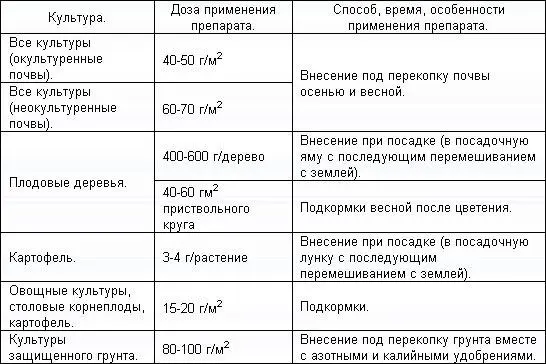
The use of double and simple phosphates on acidic soil will require preliminary preparation. For 1 sq. m. of land contribute 200 g of wood ash, thereby lowering the acidity. Remember that after this procedure, you can fertilize the beds only after a month.
If you notice that the leaves have turned dark green, with a deep bluish tint, or a rusty tint has appeared, there is an acute shortage of phosphorus. A mixture of potassium or sodium monophosphate should be used to restore the earth to working capacity.
Since some of the phosphates are highly soluble in water, their use is absolutely unlimited. Semi-soluble works best in acidic soils. Save the hardly soluble for the acidic soil of the non-chernozem zone. The fertilizer is well suited for cucumbers, trees, grapes, as it accelerates their development, increases plant regeneration and flowering quality.
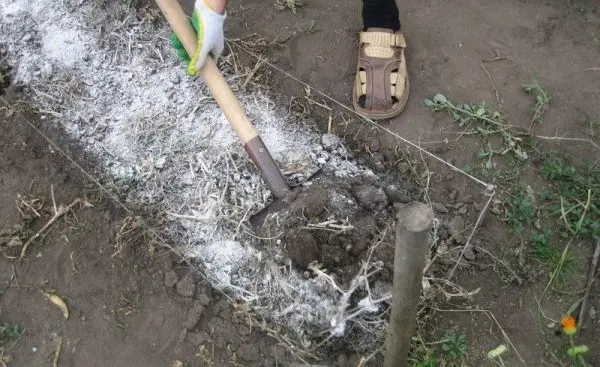
Instructions
As already mentioned, fertilizer has a positive effect on the growth of cucumbers, grapes, trees. The main thing is to carefully consider the ratio and recommendations for use. The instruction is usually indicated on the packaging, but sometimes it is worth repeating or using a different method so as not to be mistaken.
In the garden, avoid mixing phosphate fertilizers at the same time as ammonium nitrate, chalk, and urea. The interval between use should last at least a week. The most commonly used infusion of phosphate. The granules are dissolved in water, leaving to infuse for 2-3 days, then the upper part is drained, and the sediment is mixed with compost, which is placed in the hole. The settled water is used for irrigation.
Monophosphate is distributed at the rate of 40-50 g per 1 sq. m. of cultivated land. For those who have already participated in the cultivation of land, the dose is slightly higher – 55-70 g. Fertilizing fruit trees requires 500 g of powder per well. The next application of phosphate is carried out after the flowering of the tree, through watering the near-stem circle.

To fertilize grapes, superphosphate, due to low mobility in the soil, must be applied deep into the ground, closer to the roots, based on the calculation – 35-45 g per square meter. m. vineyard. Saturation with phosphorus contributes to the rapid formation of clusters and ripening of grapes. During flowering feeds through watering. Top dressing of grapes occurs in several stages.
Foliar application of superphosphate is carried out 10-12 days before flowering to reduce shedding of flowers. This method is used on cloudy days so as not to burn the leaves. The following top dressings occur as needed. An infusion of phosphate in water provides all the necessary nutrients that grapes need after flowering.
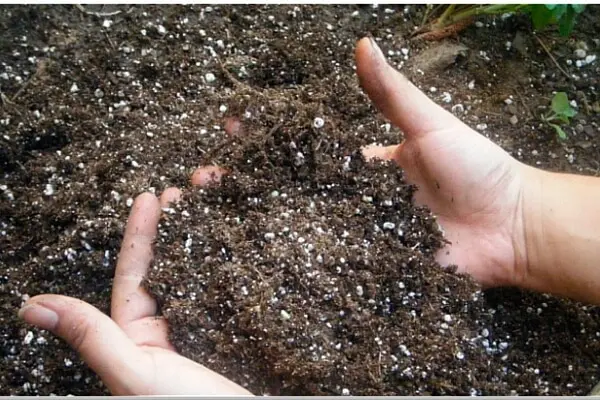
The powder is used when planting potatoes and cucumber seedlings, put 3-4 g of phosphate in each well. A little more of it is required to process the beds of cucumbers, tomatoes and potatoes – 20 g per 1 sq. m. mixed with other fertilizers. The way to care for cucumber beds is foliar feeding, which is carried out several times per season. It is necessary to dissolve in water (or use an infusion) 10 g of potassium and 40 g of superphosphate, and then water the cucumbers directly into the hole, trying to get closer to the stem. Such a solution can be used before and after flowering, enhancing the palatability of plants and their resistance to disease. Watering cucumbers is generally a very important stage in the care. Instructions for using these types of fertilizers in the country are quite easy to follow: the main thing is not to overdo it with frequency, choose the right mixture for the soil and do not forget about watering the plants.
Video “Overview of the best fertilizers with phosphorus”
Video review of the best fertilizers with phosphorus, as well as expert advice on their application.









